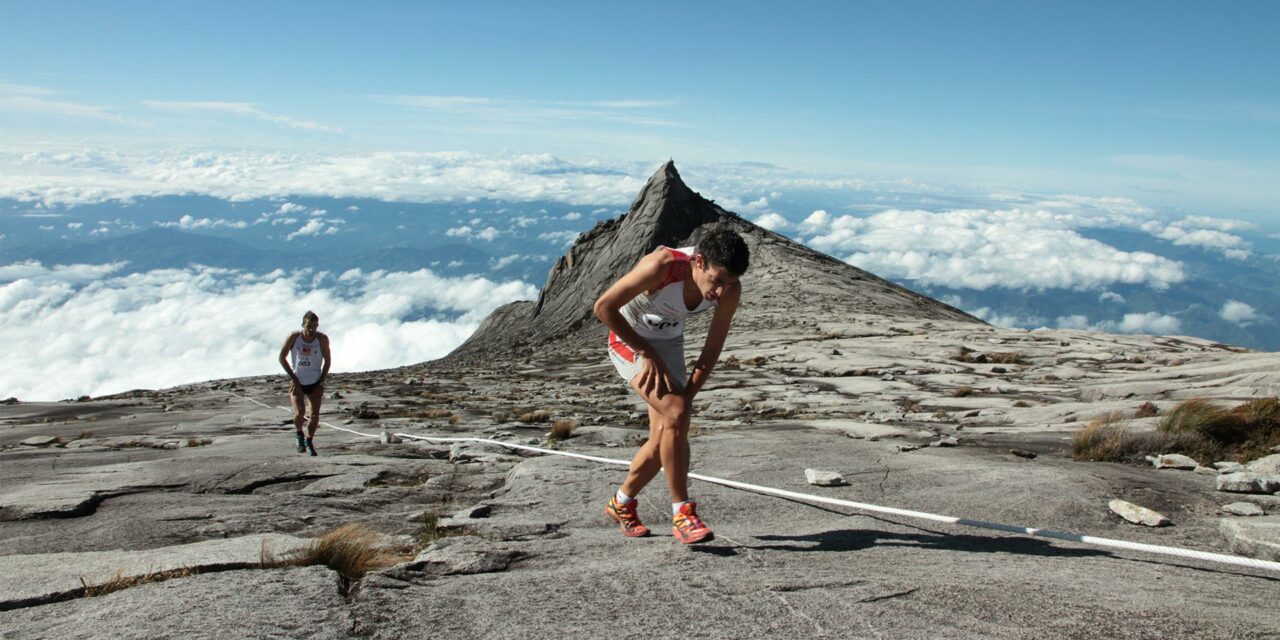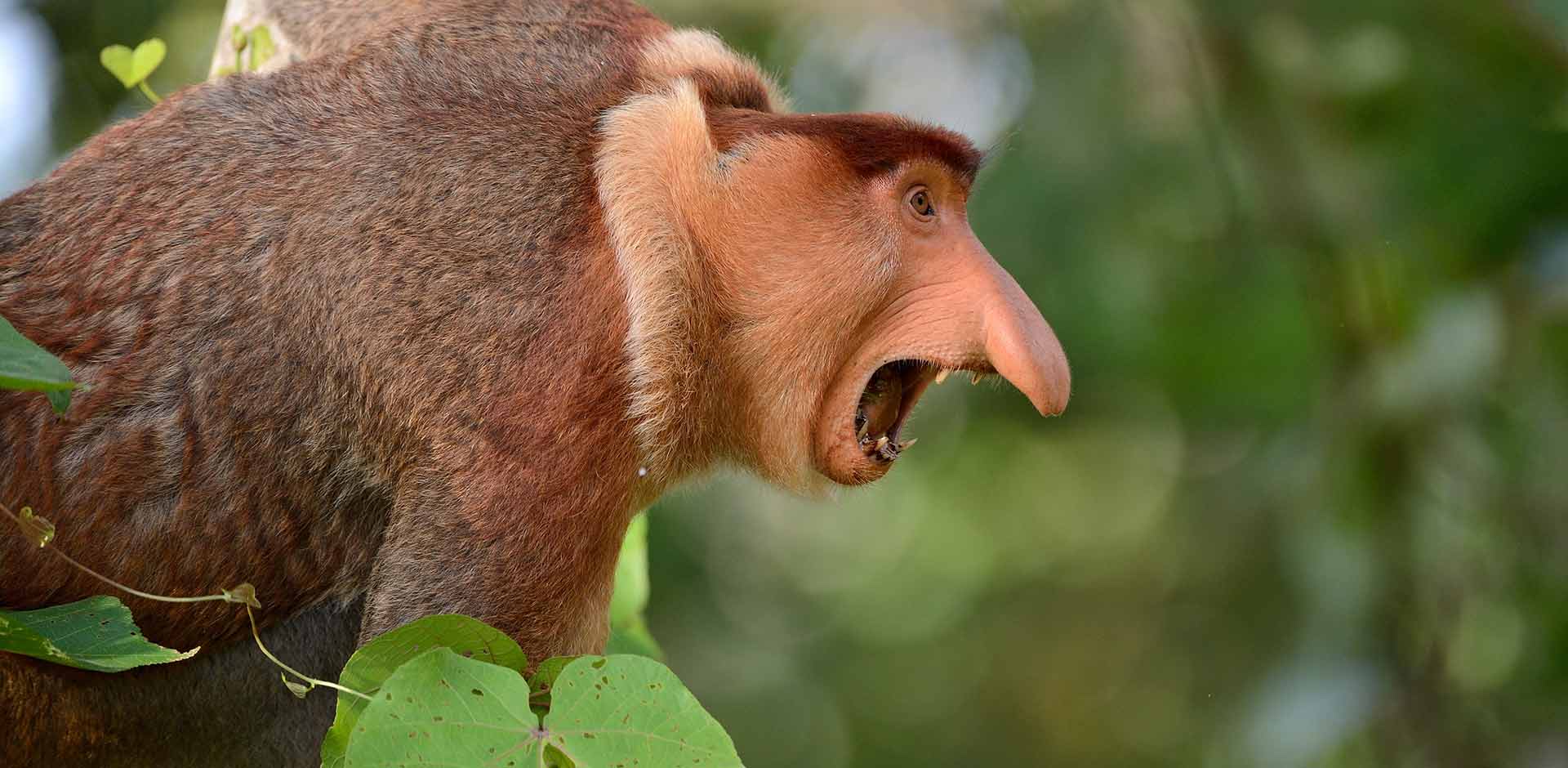A Chinese prince stranded in Sabah fell in love with a native girl and they were married. Eventually he felt homesick and returned to China to see his parents, promising he would return. His abandoned wife climbed each day to the highest peak to look for his returning ship. As years went by the climbs took their toll and she died on the peak, the spirit of the mountain took pity on her and turned her to stone so that she looks out at the South China Sea today. This is the story visitors are told when they come to climb Malaysian Borneo’s Mount Kinabalu.
It’s a nice story to those taking on the grueling days of climbing – the highest peak between the Himalayas and Papua New Guinea. However, for the past 31 years, trail runners from around the world have converged at the mountain to race to the peak in a matter of hours: Climbathon.

Sandi Menchi, who hails from Baguio City, Philippines, was invited for her first Climbathon in 2014 at the age of 24 when she placed fourth because, as she says, she didn’t stick to her game plan.
“I was excited to see the route and so my friends and I decided to climb it two days before the race, it was a lot of fun but on the morning of the race my legs were already aching a little before I even started running,” Sandi says. She speaks candidly of the majesty of the location and the hospitality of the organizers, but the race is a hard one and she is quick to point its most difficult aspects.

ABOVE: Start of the Climbathon 2017.
The grueling 21 kilometer race of the Climbathon, which gains 2,300 meters of elevation over just 8 kilometers, attracts hundreds of runners each year including Sandi Menchi who has completed the race three times and was the women’s winner in both 2016 and 2017.
The Kinabalu Climbathon started in 1987 as a way to train a rapid rescue squad of rangers to aid injured climbers. Since then the race has grown to be recognized by international runners’ organizations and was included into the Skyrunner World Series in 2012.
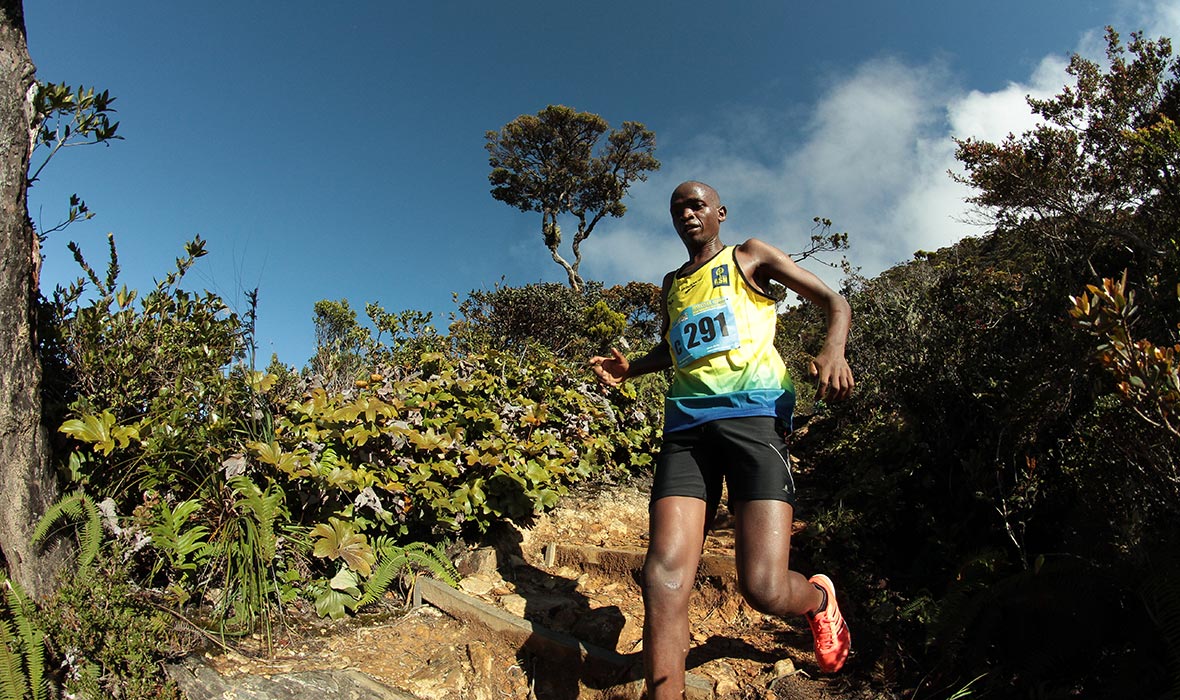
Starting in 2017 Climbathon became a bi-annual event. The next race is scheduled for October 2019 when Sandi Menchi and some of the other top trail and mountain runners in the world will meet up again to do the near impossible.
For most climbing Kinabalu is a two day affair with a required overnight stay at a lodge around 3,000 meters from which the final ascent on day two begins as early as 2:30 am in order to experience the sun rise from its frigid summit.
“Running Kinabalu is a unique race, not only for the changing terrain and elevation gain but the weather. While you may start in hot, humid conditions at the base of the mountain by the time you summit it’s cold and windy and that can cause cramping. The air thins out near the top so if you haven’t paced your start well you can collapse from lack of oxygen.”
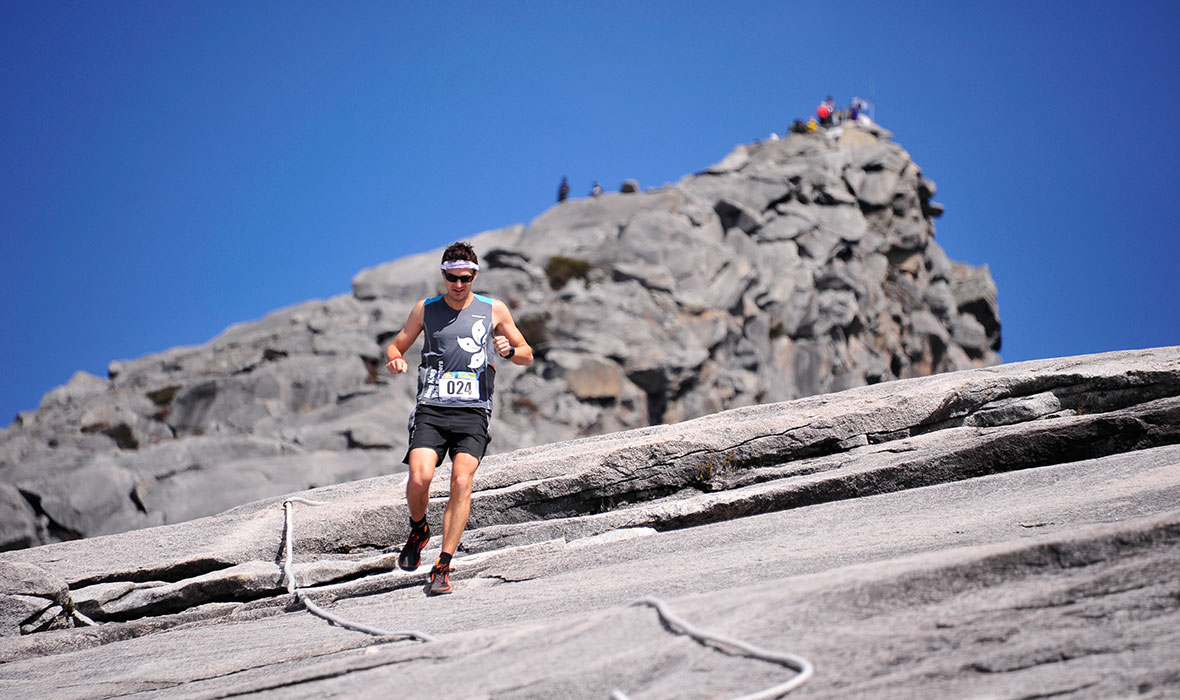
ABOVE: Runner on Kinabalu.
After the mistake she made her first time she adapted her training for the race and created a game plan that she stuck to in 2016 which earned her the win when she completed the course in 2 hours and 58 minutes. “The race combines so many kinds of running, there is basic trail running which leads to very rocky uphill paths to actual stairs and finally the granite steppes near the top. You have to be able to change style, change strategy in order to run at the top level.”
Among her present busy running schedule are races in Hong Kong and Mont Blanc as well the upcoming Skyrunning World Championship in September but Sandi looks forward to the 2019 Climbathon for which she has some advice for first timers.
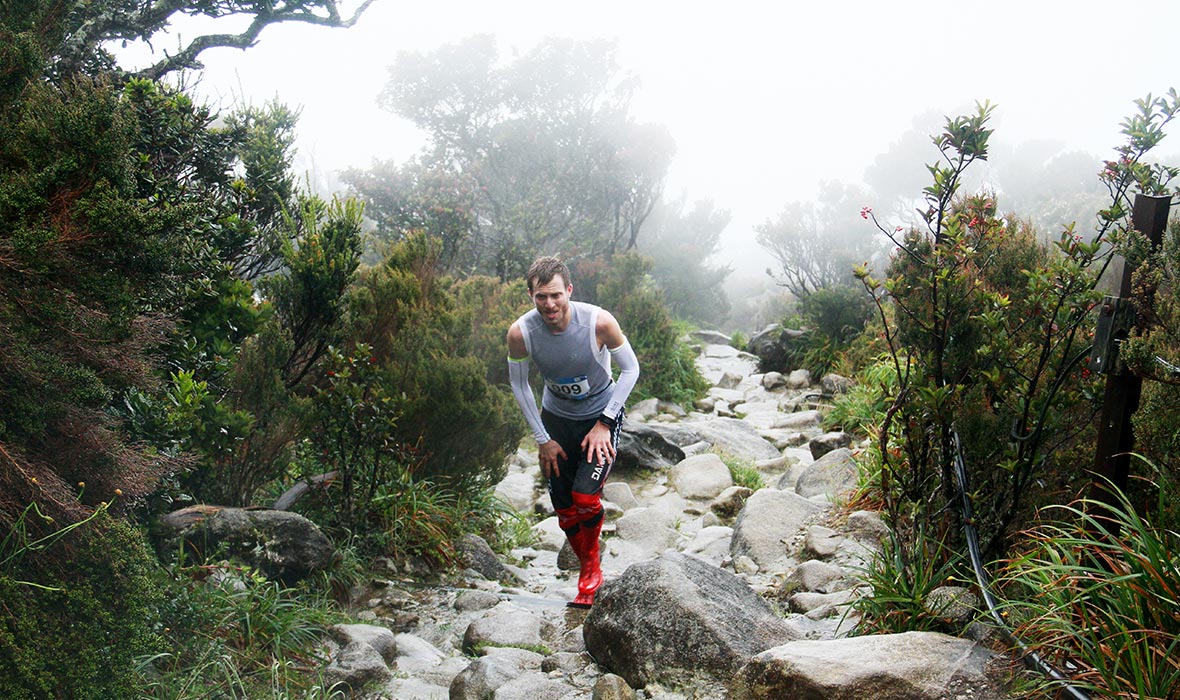
ABOVE: Struggling up Mount Kinabalu.
“You have to enjoy the race, it hurts of course, and at times you may feel as if you cannot go on. That is when you have to take in the scenery, appreciate the mountain, it’s a special place but also remember you’re not walking in a park, there are cut off times.”
The first recorded ascent of Kinabalu was in 1851 by British Colonial Administrator Hugh Low who didn’t actually summit saying that the peak was “inaccessible to any but winged animals”, though this was proven untrue just 35 years later when zoologist John Whitehead summited its highest point.
Today, climbing Kinabalu is one of the most popular activities in Malaysian Borneo which has prompted park authorities to issue only 135 permits per day in order to protect the fragile balance of the areas ecology. Permits are included in climbing packages arranged by local companies who will also arrange mandatory guides and accommodation.

ABOVE: Sandi Menchi at the finish line.
Its summit called Lows Peak at 4,095 meters (recently corrected with satellite technology from its previous measure of 4,101) makes it the 20th most prominent mountain in the world.
Located in the Sabah region of Northern Malaysian Borneo, Kinabalu Park is a world Heritage Site due its extraordinary biological diversity which includes orangutans and the world’s largest flower, the Raffleasia, known as the ‘corpse flower’ for its putrid smell.
The area which seems more like a European landscape than a mountain range high above the steamy rain forests of Borneo is actually classified as a montane alpine meadow and experiences temperatures as low as -4 Celsius December through January when the peak can be covered with frost and even snow.


